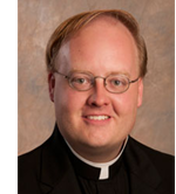|
We are continuing to look at the Sacrament of Anointing of the Sick and now it’s time to turn to the ritual itself to see what it contains. While there are a number of rituals that can be used given various circumstances, we are going to look at the ritual for an Anointing Outside of Mass, which gives us the most complete picture of the ritual.
The first part of the ritual is the usual Sign of the Cross and greeting and an optional Sprinkling Rite followed by the Instruction on the Sacrament, in the Introduction we see two things emphasized – the first is the healing nature of Christ, of how the sick were drawn to Him and His power to heal, the second we hear is a quotation from the Letter of St. James which urges the sick to call upon the priest for an anointing which will lead to the Lord “raising them up” (whether to good health or, as the case may be, to eternal life). Following the Introduction it is appropriate for the sick person to make a good confession, or if that does not take place at that time, then a Penitential Act takes place, urging the sick person to seek forgiveness for one’s sins and then follows a short reading from scripture. Following these introductory rites we move into the Liturgy of the Anointing. This part of the ritual begins with a short litany, asking God’s help for the sick person and calling upon His mercy. Following the litany the priest will then lay his hands on the head of the sick person – we have talked about the ancient gesture of the “laying on of hands” in prior articles and so we won’t repeat that discussion here, but will point out once again that it is associated with calling down the Holy Spirit and asking God to make His power manifest in a specific way, in this case, for healing. There is then a brief prayer of thanksgiving over the blessed oil, giving praise to God for His power and the way He uses that power for our sanctification, then there is the anointing itself. In the Sacrament of the Anointing of the Sick, the priest will anoint both the forehead of the sick person as well as the palms of the hands. While he anoints the forehead with the Oil of the Sick in the sign of the cross, he prays, “Through this holy anointing may the Lord in his love and mercy help you with the grace of the Holy Spirit.” As he anoints the palms of the hands he prays, “may the Lord who frees you from sin save you and raise you up.” Note that these anointings and the words that are prayed constitute the matter and form of the sacrament – the matter is the anointing with the oil and the form are the words that are prayed with the anointing. Following the anointing itself a prayer is prayed, then the Our Father and, if appropriate, the Eucharist is received, followed by a Prayer after Communion and a final blessing. As I noted earlier in this article there are numerous variations on this basic ritual to take into account various situations, so, for instance, there is a shorter ritual designed to be used in hospitals or institutions where there may be a number of people to be anointed or when time is of the essence, there is a ritual for anointing within a Mass and then there are special prayers for use when someone is dying and rituals which include emergency situations, or Christian Initiation for the dying (including baptism, confirmation and reception of the Eucharist). In our next article we are going to look at a few specific things surrounding Anointing of the Sick, including when one should be anointed. (This article is part of a series of articles on The Sacraments which will appear in the bulletin over the course of this year.) Comments are closed.
|
Fr. PeterArchives
June 2023
Categories |
Join us at MassSaturday at 4pm;
Sunday at 7:30am, 9:00am, 10:30am Daily Masses: Monday-Friday 6:30am Tuesday/Friday 8::00am (school days only) Saturdays 8:00am Sacrament of Reconciliation |
|


 RSS Feed
RSS Feed
